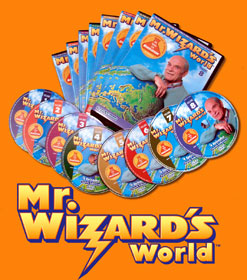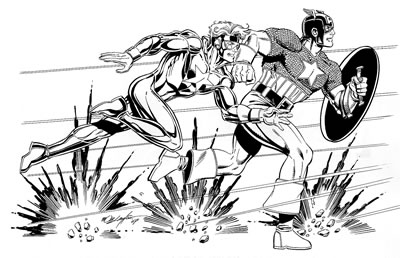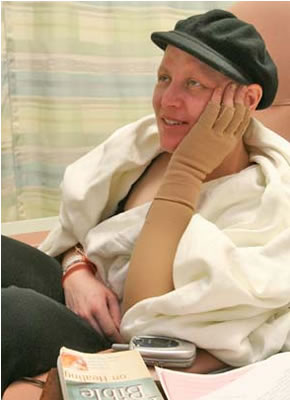Today's Comic Art Friday is dedicated to the late
Don Herbert, better known to generations of teleholics as "Mr. Wizard." Herbert's 1950s show,
Watch Mr. Wizard, pioneered the concept that television for kids could be educational without being either condescending or boring. In the '80s, Herbert returned to the tube on Nickelodeon, with
Mr. Wizard's World, bringing his genial blend of professorial wisdom and whiz-bang science to a whole new audience.

Had there been no Mr. Wizard, we would never have known
Beakman's World or
Bill Nye, the Science Guy. Don Herbert made being a science nerd cool — which, for those of us who are nerds, is no small accomplishment. We'll miss you, Mr. Wizard.
The funny thing about
my Common Elements art gallery — the one in which comic artists pair up unrelated superheroes who have some characteristic in common — is that on occasion, the characters involved share more than one "common element." Sometimes, in fact, there are several common elements in the piece that I didn't even consider when I developed the concept.
Take, for example, this newly arrived gem from the pen of longtime comics stalwart Bob Layton. It features
Booster Gold, one of the central figures in DC Comics' recently concluded maxiseries
52, alongside the legendary
Captain America. (You can click the pic to see it in greater detail.)

When this concept came to me, I had one — and really, only one — Common Element in mind between Booster and Cap. Both heroes, although their adventures are set in the present day, began their careers in other time periods: Captain America in the 1940s during World War II, Booster Gold in the 25th century. Hence the title I assigned to the concept: "Out of Time."
From the beginning, I wanted
Bob Layton to draw this Common Element. Layton is best known in comic circles as "the Iron Man guy," thanks to his lengthy association with the Golden Avenger as both artist and writer, often in partnership with scripter David Michelinie. Bob's also recognized as one of the most gifted inkers in the industry. From my perspective, it's his overall artistic talent — penciling, inking, and conceptual design — that makes him great.
When the opportunity arose to commission Bob, I jumped at the chance to turn him loose on my "out of time" idea. As I was rounding up pictures of Cap and Booster to send to Bob as reference, I noted (to my surprise, given that I hadn't seen it before) that the two heroes shared an even more obvious commonality than the one I'd envisioned: the five-pointed star motif emblazoned on their rippling pectorals. How could I have missed that? I don't know, but I did, until I had the pictures of each character on the screen in front of me.
Since I added the scan of this artwork to
my permanent gallery at Comic Art Fans, other collectors have pointed out additional connections between Booster and Cap. For one, both are blond. For another, both were recently killed off in their respective storylines — Booster, though, has already been "resurrected," and I don't know a single comics fan who doesn't believe that Captain America will make a triumphant return as well.
I also thought of one more similarity. Both Cap and Booster, at one point in their careers, abandoned their more familiar code names and costumes in favor of a temporary superhero identity. Captain America, disillusioned by the Watergate scandal, shrugged off his iconic red-white-and-blue for several months in the mid-1970s, in the guise of the more iconoclastic
Nomad. During the year-long events of
52, Booster Gold — who at the time was believed to be dead — became the mysterious
Supernova, whose real identity wasn't revealed (to the characters or the audience) until late in the series' run. (Astute readers, however, had solved the puzzle long before Supernova unmasked.) Someday, I'd like to team Nomad and Supernova in another Common Elements commission that ties these threads together.
Speaking of Booster Gold, the current issue of
Back Issue magazine (#22) features an excellent article about Booster and his erstwhile partner, the Blue Beetle. If you look closely, you'll see my Booster pinup — penciled by Booster's creator Dan Jurgens, and inked by veteran Joe Rubinstein — smiling back at you on page 78.

Thanks to
Back Issue editor Michael Eury for using my contribution!
And that's your Comic Art Friday.
Labels: Celebritiana, Comic Art Friday, Dead People Got No Reason to Live, Teleholics Anonymous, Weird Science























